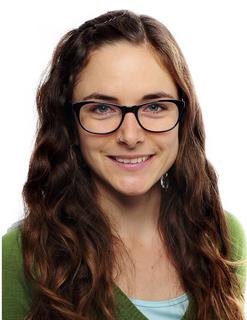Novel imaging method through further development of X-ray sources
Whether at the dentist or orthopedist: X-ray examinations are among the most common diagnostic procedures. The research conducted by Theresa Staufer and her team from the University of Hamburg (UHH) and CFEL is focused on further developing a compact X-ray system that will make novel diagnostics in biomedical research much easier to implement and thus more accessible. The project is funded by the Joachim Herz Foundation's new "Innovation Academy for Applied Infection Research" program.
Theresa Staufer works at the Institute of Experimental Physics of the University of Hamburg at CFEL and leads the project funded by the Joachim Herz Foundation. Photo: Staufer
With the help of so-called X-ray fluorescence imaging, immune cells can be tracked in living organisms and new insights into inflammatory diseases can be gained. This groundbreaking application has been developed by a team from the Department of Physics at the UHH and CFEL led by Florian Grüner and Theresa Stauffer: in addition to tracking cells, the temporal and spatial distribution of drugs or antibodies can also be measured. In this way, for example, new insights can be gained during the development of drugs or into inflammation processes, also tumor metastases could be precisely localized.
The funding within the framework of the "Innovation Academy for Applied Infection Research" of the Joachim Herz Foundation is intended to further develop the necessary X-ray source for this X-ray based imaging method. Since the samples currently can only be measured at a typically very large synchrotron, the goal of the project, which is being funded with approximately 200.000 euros, is to scale down the novel X-ray device so that it fits into any conventional laboratory and can be established in various research areas. Measurements at this device are planned to run fully automatically so that operation is as simple as possible and does not require expert knowledge. In this way, the novel imaging method will be disseminated in diverse and very wide-ranging areas of application.
The Joachim Herz Foundation's "Innovation Academy for Applied Infection Research" funding program supports interdisciplinary, innovative and high-risk research projects at the interface between engineering, the natural sciences and medicine that are highly relevant to infection research and have an added value for society.
As with all the projects funded by the first Innovation Academy, Staufer's team is also focusing on practical implementation: "We already have a prototype in our lab with which we were able to demonstrate that our goal is definitely achievable. We now have to develop these basic principles further in order to construct a device that is as compact and cost-effective as possible," says Staufer. The project, in which the physicists are also in exchange with different companies, started on October 1, 2023.
